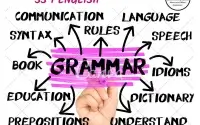JSS 1 Music Second Term Revision Questions and Answers
Music JSS 1 Second Term Weekly Topics (Weeks 1 – 11)
Below is a structured outline of the topics covered in Music JSS 1 Second Term from Week 1 to Week 11:
Weekly Topics
- Week 1: Revision of First-Term Work
- Week 2: Definition, Meaning, and Importance of Music
- Week 3: Elements of Music (Melody, Rhythm, Harmony, Dynamics, Tempo, etc.)
- Week 4: Notation in Music (Staff, Clefs, Notes, and Rests)
- Week 5: Solfa Notation (Tonic Solfa and Letter Names)
- Week 6: Time Signatures in Music (Simple and Compound Time)
- Week 7: Types of Musical Notes and Their Values
- Week 8: Accidentals in Music (Sharp, Flat, and Natural)
- Week 9: Life and Works of G.F. Handel
- Week 10: Life and Works of Ayo Bankole
- Week 11: European/Western Musical Instruments
Music JSS 1 Second Term Revision – Week 12
This revision exercise covers all topics taught from Week 1 to Week 11. It includes FAQs, objective questions, theory questions, True/False statements, and fill-in-the-gaps exercises to help students revise key concepts and prepare for exams.
Part A: Review and Revision (FAQs with Answers)
Frequently Asked Questions (FAQs)
-
What is music?
- Music is the combination of sounds that are pleasant to the ear.
-
Mention two importance of music.
- Music helps in communication and entertainment.
-
What are the elements of music?
- Melody, Rhythm, Harmony, Tempo, Dynamics, etc.
-
What is melody?
- A sequence of musical notes arranged in a pleasing way.
-
How many lines and spaces does a staff have?
- Five lines and four spaces.
-
What are the two main types of musical notation?
- Staff notation and Solfa notation.
-
What is tonic solfa?
- A system of reading music using syllables like doh, re, mi, fa, sol, la, ti.
-
How many beats does a semibreve have?
- Four beats.
-
What are accidentals in music?
- Signs that change the pitch of a note (sharp, flat, and natural).
-
Who composed “Messiah”?
- G.F. Handel.
- Where was G.F. Handel born?
- Halle, Germany.
- Which Nigerian composer studied at Cambridge University?
- Ayo Bankole.
- What are the four families of Western musical instruments?
- String, Woodwind, Brass, and Percussion.
- Give two examples of string instruments.
- Violin and Guitar.
- Which instrument belongs to the brass family?
- Trumpet.
- What is an oratorio?
- A large musical composition based on a religious theme.
- Which instrument has black and white keys?
- Piano.
- Which instrument is played by buzzing the lips into a mouthpiece?
- Tuba.
- What is the difference between plucked and bowed string instruments?
- Plucked instruments (e.g., Guitar) are played by plucking, while bowed instruments (e.g., Violin) are played with a bow.
- How does a percussion instrument produce sound?
- By striking, shaking, or hitting it.
Part B: Objective Questions (Multiple Choice)
-
Music is a combination of _____.
a) Noise and speech
b) Pleasant and meaningful sounds
c) Only vocal sounds
d) Random sounds -
The five lines and four spaces in music notation are called the _____.
a) Rhythm
b) Staff
c) Note
d) Scale -
Which of these is NOT an element of music?
a) Melody
b) Color
c) Rhythm
d) Harmony -
Which time signature shows 3 beats in a bar?
a) 2/4
b) 4/4
c) 3/4
d) 6/8 -
Who is known for composing the oratorio “Messiah”?
a) Beethoven
b) G.F. Handel
c) Mozart
d) Ayo Bankole
Part C: Theory Questions (Short Answer)
- What is tempo in music?
- Name the four main types of musical notes.
- What is the function of accidentals in music?
- Who was Ayo Bankole, and what did he achieve?
- What are the four families of Western musical instruments?
- What is solfa notation?
- Name three brass instruments.
- How many beats does a minim have?
- What does a flat sign do to a note?
- What is the purpose of a clef in music?
Part D: True or False Questions
- Music consists of only spoken words. (False)
- The violin is a percussion instrument. (False)
- G.F. Handel was a German composer. (True)
- Ayo Bankole was born in France. (False)
- The flute belongs to the woodwind family. (True)
- The piano is a plucked instrument. (False)
- A semibreve lasts for two beats. (False)
- The tuba is a brass instrument. (True)
- The drum is a string instrument. (False)
- The treble clef is used for high-pitched notes. (True)
Part E: Fill-in-the-Gaps Questions
- The _____ is the musical symbol that represents pitch and rhythm.
- A treble clef is used for _____-pitched sounds.
- The _____ is played by plucking strings.
- G.F. Handel was born in _____ in 1685.
- The drum belongs to the _____ family.
- Ayo Bankole studied music at _____ University.
- The trumpet belongs to the _____ family.
- The piano has both _____ and _____ keys.
- An oratorio is a _____ composition based on a religious theme.
- The flute is played by _____ air into it.
Conclusion
This revision helps students recall key facts, understand musical concepts, and prepare for exams with confidence. The questions cover all important topics, using simple language to ensure clarity.
Continued Revision: Music JSS 1 Second Term
Part B: Objective Questions (Multiple Choice) – Continued
-
Which of these is an example of a percussion instrument?
a) Flute
b) Violin
c) Drums
d) Trumpet -
Which accidental raises a note by a semitone?
a) Flat (♭)
b) Sharp (♯)
c) Natural (♮)
d) Fermata (𝄐) -
Which of these is NOT a string instrument?
a) Guitar
b) Piano
c) Violin
d) Trombone -
Which of the following is a bowed string instrument?
a) Harp
b) Violin
c) Guitar
d) Banjo -
The symbol used to indicate silence in music is called a _____.
a) Clef
b) Note
c) Rest
d) Key signature -
Ayo Bankole was famous for being a _____.
a) Scientist
b) Composer
c) Engineer
d) Politician -
A semibreve is equal to how many minims?
a) One
b) Two
c) Three
d) Four -
Which time signature means “four beats per bar”?
a) 2/4
b) 3/4
c) 4/4
d) 6/8 -
What do we call the five lines and four spaces used in music notation?
a) Scale
b) Staff
c) Chord
d) Octave -
The tempo of music refers to its _____.
a) Volume
b) Speed
c) Pitch
d) Harmony -
Which of the following instruments belongs to the woodwind family?
a) Trumpet
b) Clarinet
c) Guitar
d) Drums -
Which clef is also known as the “G clef”?
a) Bass clef
b) Alto clef
c) Treble clef
d) Tenor clef -
The bass clef is used for which type of notes?
a) High-pitched notes
b) Low-pitched notes
c) Medium-pitched notes
d) Fast notes -
Which Nigerian composer was born in 1935?
a) Fela Kuti
b) Ayo Bankole
c) G.F. Handel
d) Ludwig van Beethoven -
Which of the following is an example of an oratorio?
a) “Messiah”
b) “The Magic Flute”
c) “Symphony No. 9”
d) “Piano Concerto No. 21”
Part C: Theory Questions (Short Answer) – Continued
- Explain the difference between simple and compound time signatures.
- What is the function of the treble clef in music?
- How many beats does a quaver have?
- Mention three instruments in the woodwind family.
- What is a sharp sign, and how does it affect a note?
- Define harmony in music.
- Mention two differences between staff notation and tonic solfa.
- Who composed “Messiah,” and what type of music is it?
- What instrument did Ayo Bankole play in churches before studying abroad?
- Give two examples of brass instruments.
Part D: True or False Questions – Continued
- The flute is a brass instrument. (False)
- A minim is worth two crotchets. (True)
- Ayo Bankole studied music at Harvard University. (False)
- The snare drum is a percussion instrument. (True)
- The violin is played by striking it with a mallet. (False)
- A flat sign (♭) lowers a note by a semitone. (True)
- The clarinet produces sound using a vibrating reed. (True)
- The French horn is a woodwind instrument. (False)
- A dotted crotchet lasts for one and a half beats. (True)
- An oratorio is a large musical work for orchestra, choir, and soloists. (True)
Part E: Fill-in-the-Gaps Questions – Continued
- The _____ is used to organize musical notes into a readable form.
- Ayo Bankole was a Nigerian _____ and composer.
- The piano is classified as both a string and _____ instrument.
- G.F. Handel’s famous oratorio is called _____.
- The crotchet is also known as a _____ note.
- The trumpet belongs to the _____ family.
- A flat sign (♭) makes a note sound _____.
- The _____ is an instrument played by plucking its strings.
- The tuba is a large brass instrument that produces a _____ sound.
- A time signature tells us the number of _____ in a bar.
Final Conclusion
This comprehensive revision covers all key topics from the Music JSS 1 Second Term curriculum. The variety of questions and activities will help students recall information, understand musical concepts, and prepare effectively for exams.
Related
Related posts:
- Music JSS 1 Second Term Lesson Notes – Musical Notes, Time Value, and Rest
- Music JSS 1 Second Term Lesson Notes – Bar Lines
- Music JSS 1 Second Term Lesson Notes – Music Writing (Rules and Stem)
- Life and Works of Ayo Bankole – Music JSS 1 Lesson Notes
- European or Western Musical Instruments – JSS 1 Music Lesson
Related Posts

Understanding Entrepreneurship: Meaning, Benefits, and Types

Crafting Effective Introductions, Bodies, and Conclusions Composition English Grammar JSS 1 First Term Lesson Notes Week 2
Yoruba Jss 1 Scheme of work
About The Author
Edu Delight Tutors
Am a dedicated educator with a passion for learning and a keen interest in technology. I believe that technology can revolutionize education and am committed to creating an online hub of knowledge, inspiration, and growth for both educators and students. Welcome to Edu Delight Tutors, where learning knows no boundaries.